Preliminaries
I first start with my Ubuntu 16.04 Linux system that has Visual Studio Code (VSC), Docker and .Net Core installed. My Windows system is running Windows 10 Education version 10.0.16299 with Docker for Windows and .Net Core installed.
From the Ubuntu Linux Desktop
From the command prompt on Ubuntu let’s create a new ASP.Net app.
>dotnet new razor -o demoApp
Here is the output:
The template "ASP.NET Core Web App" was created successfully.
This template contains technologies from parties other than Microsoft, see https://aka.ms/template-3pn for details.
Processing post-creation actions...
Running 'dotnet restore' on demoApp/demoApp.csproj...
Restoring packages for /home/mark/Code/dotnetcore/demoApp/demoApp.csproj...
Restore completed in 4.1 sec for /home/mark/Code/dotnetcore/demoApp/demoApp.csproj.
Generating MSBuild file /home/mark/Code/dotnetcore/demoApp/obj/demoApp.csproj.nuget.g.props.
Generating MSBuild file /home/mark/Code/dotnetcore/demoApp/obj/demoApp.csproj.nuget.g.targets.
Restore completed in 18.85 sec for /home/mark/Code/dotnetcore/demoApp/demoApp.csproj.
Restore succeeded.
Then in Visual Studio Code (VSC) I open the new demoApp folder:
Next, I opened the About.cshtml Razor file in VSC and made the following changes:
After that, I ran the
>dotnet run
command from the command prompt and browsed to http://localhost:5000/About in my web browser and noted the changes:
I then issued a Ctrl+C at the command prompt to stop the app.
Now to create a Docker image. First, I added a Dockerfile to the demoApp:
I will refer you here for the anatomy of a Dockerfile and here for information about the aspnetcore-build image specifically.
Next, from the command prompt I did the following:
>docker build --rm -f Dockerfile -t demoapp:v0.1 .
This resulted in the following output:
Sending build context to Docker daemon 2.981MB
Step 1/14 : FROM microsoft/aspnetcore-build AS builder
---> e421e10eaa5d
Step 2/14 : WORKDIR /source
---> Using cache
---> fde5241ee8a9
Step 3/14 : COPY *.csproj .
---> 6015c9b573b7
Step 4/14 : RUN dotnet restore
---> Running in 2b79cd9bcc6a
Restoring packages for /source/demoApp.csproj...
Restoring packages for /source/demoApp.csproj...
Installing Microsoft.VisualStudio.Web.CodeGeneration.Contracts 2.0.0.
Installing Microsoft.VisualStudio.Web.CodeGeneration.Tools 2.0.0.
...installing many .Net Core 2.0 packages...
Installing Microsoft.AspNetCore.ResponseCompression 2.0.0.
Restore completed in 21.68 sec for /source/demoApp.csproj.
Generating MSBuild file /source/obj/demoApp.csproj.nuget.g.props.
Generating MSBuild file /source/obj/demoApp.csproj.nuget.g.targets.
Restore completed in 21.81 sec for /source/demoApp.csproj.
Removing intermediate container 2b79cd9bcc6a
---> 42f7988a24dd
Step 5/14 : COPY . .
---> da398320c33c
Step 6/14 : RUN dotnet publish --output /app/ --configuration Release
---> Running in 1b09f2cbe7e8
Microsoft (R) Build Engine version 15.4.8.50001 for .NET Core
Copyright (C) Microsoft Corporation. All rights reserved.
demoApp -> /source/bin/Release/netcoreapp2.0/demoApp.dll
demoApp -> /app/
Removing intermediate container 1b09f2cbe7e8
---> 2c855dca70f5
Step 7/14 : FROM microsoft/aspnetcore
---> c8edb557c4f6
Step 8/14 : LABEL Name=demoApp Version=0.0.1
---> Running in af48e869c1af
Removing intermediate container af48e869c1af
---> 0c656950547f
Step 9/14 : WORKDIR /app
Removing intermediate container 04f38f1e3c62
---> ee6d00cf12e0
Step 10/14 : ENV ASPNETCORE_URLS http://*:80
---> Running in 4eaea7dc650a
Removing intermediate container 4eaea7dc650a
---> 6cd5424b62b3
Step 11/14 : EXPOSE 80
---> Running in 52745eb44fe4
Removing intermediate container 52745eb44fe4
---> 9d71c7fc7f35
Step 12/14 : COPY --from=builder /app .
---> 8fd885142f6c
Step 13/14 : ENTRYPOINT dotnet demoApp.dll
---> Running in f400dcd4dc15
Removing intermediate container f400dcd4dc15
---> 6d41a646da3b
Step 14/14 : CMD dotnet demoApp.dll
---> Running in 4e2f93567d8f
Removing intermediate container 4e2f93567d8f
---> c55c9141abee
Successfully built c55c9141abee
Successfully tagged demoapp:v0.1
Then I tagged the image from the command prompt :
>docker tag demoapp:v0.1 m2web/demo:demoapp
I logged into Docker:
>docker login
>Username (m2web): m2web
>Password: myPasswordHere
>Login Succeeded
I pushed the image to my personal docker repository:
>docker push m2web/demo:demoapp
and it successfully pushed to the docker repo.
Let’s test the image locally by running it from the docker repo:
>docker run -d -p 80:80 m2web/demo:demoapp
Next, browse to the About page that is now running on our localhost:
So we have a Docker image of the ASP.Net Core app that we created on Ubuntu Linux. Now to see it running on Windows 10.
From Windows
In Windows with Docker running make sure that you are ready to run Linux containers. To check this select the Docker icon in the system tray.
Right-mouse click the Docker icon and open the menu that you see below. Note that I have the option to Switch to Windows containers. This means that I am now ready to view Linux containers. If the option is to Swith to Linux containers then select that option as we are going to load the image we created on Ubuntu into a container and run it.
Now open Powershell and let’s run the image from the docker repo locally on the Windows system:
As you can see, I already had most of the base images from previous container loads.
Next, browse to the About page, as we did before on the Ubuntu Linux system and see that our image from the Docker Hub repo is now running on our localhost:











